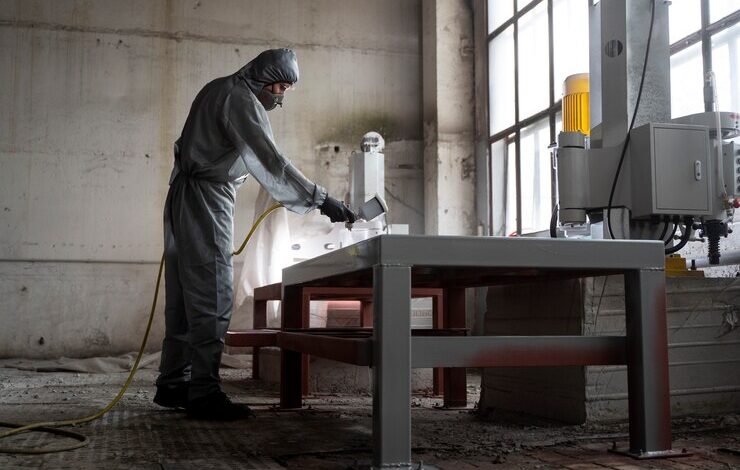Blasting into Efficiency: The Ultimate Guide to Sandblasting Cabinets

Sandblasting cabinets are essential tools for anyone looking to remove paint, rust, and other surface contaminants quickly and efficiently. These cabinets provide a controlled environment for sandblasting, ensuring the operator is protected from harmful dust and debris while containing the blasting media. Here’s a rundown on choosing and using the right cabinet.
Introduction to Sandblasting Cabinets
These blasting cabinets are used in various industries to clean, smooth, or shape surfaces. They propel abrasive materials at high speeds to strip away unwanted layers from a surface. Understanding these cabinets’ basic functions and types is crucial for selecting the right equipment.
Types of Sandblasting Cabinets
Choosing the right type of cabinet depends on your specific needs and the tasks you want to perform.
1. Suction (Siphon) Cabinets: Suction cabinets use a suction gun to pull abrasive media into the blasting nozzle. They are best suited for light to occasional use, general cleaning, and light production jobs. These cabinets are easy to use and maintain, making them a popular choice for small workshops.
2. Pressure Cabinets: Pressure cabinets deliver abrasive media directly to the blasting nozzle under high pressure. They are more efficient and faster than suction cabinets, making them ideal for heavy-duty tasks. Although they have a higher initial cost, their increased efficiency can save time and money in the long run.
3. Wet Blasting Cabinets Wet blasting cabinets use water and abrasive media to reduce dust and provide a cleaner finish. These cabinets are excellent for tasks that generate a lot of dust or involve delicate surfaces that could be damaged by dry blasting.
Choosing the Right Sandblasting Cabinet
When selecting this cabinet, consider the following factors to pick the best one for your needs.
1. Purpose: Determine what you need the cabinet for, whether light cleaning, heavy-duty stripping, or detailed finishing work.
2. Budget: Assess your budget and find a balance between cost and the features you need. While pressure cabinets may be more expensive, they offer greater efficiency for heavy-duty tasks.
3. Space: Consider the size of the cabinet relative to your workspace. Make sure you have enough room to operate it comfortably and safely.
4. Abrasive Media: Decide on the abrasive media you will use, such as aluminum oxide, glass beads, or walnut shells. Each type of media has different properties and is suited for different tasks.
Setting Up and Using a Sandblasting Cabinet
Proper setup and usage are key to getting the best results from this cabinet.
1. Preparation: Before starting, ensure the workpiece is grease and oil-free. Load the hopper with the appropriate abrasive media and check that all components, such as the compressor and nozzle, are in good condition.
2. Operation: Adjust the pressure settings to suit the media and surface type. Use smooth, even strokes to cover the surface uniformly. Always wear protective gear, gloves, goggles, and respirators to safeguard against dust and debris.
Conclusion
Sandblasting cabinets are versatile tools that can significantly improve the efficiency of your surface preparation tasks. You can ensure optimal performance and longevity by choosing the right type of cabinet, using it correctly, and maintaining it well. Whether for industrial applications or DIY projects, understanding how to use this cabinet effectively will help you easily achieve professional results.



